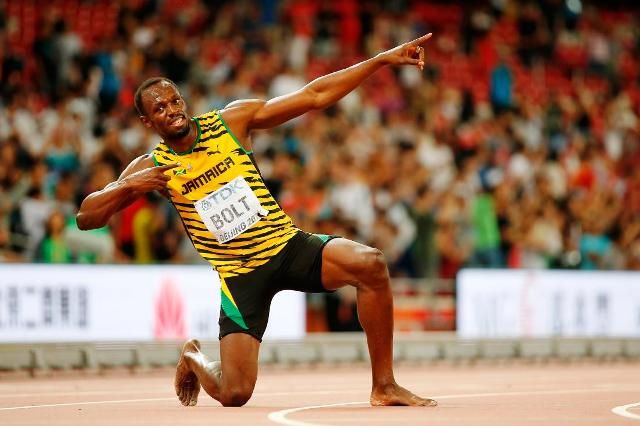Trigger Finger In Athletes: Diagnosis, Treatment, And Recovery

Trigger Finger In Athletes: Diagnosis, Treatment, And Recovery. Discover more detailed and exciting information on our website. Click the link below to start your adventure: Visit Best Website. Don't miss out!
Table of Contents
Trigger Finger in Athletes: Diagnosis, Treatment, and a Path to Recovery
Trigger finger, also known as stenosing tenosynovitis, is a frustrating condition that can sideline even the most dedicated athletes. This debilitating ailment affects the tendons and tendons sheaths in the hand and fingers, causing painful locking and snapping sensations. While not as widely discussed as other sports injuries, trigger finger significantly impacts athletic performance and overall quality of life. This article delves into the diagnosis, treatment options, and recovery strategies for athletes suffering from this common hand ailment.
Understanding Trigger Finger in Athletes
Trigger finger occurs when the tendons that bend the fingers become inflamed and thickened within their protective sheath (tendon sheath). This inflammation restricts the tendon's smooth gliding motion, leading to the characteristic "triggering" or catching sensation. Athletes, particularly those involved in sports requiring repetitive hand movements like racquet sports, weightlifting, or gymnastics, are at increased risk. The repetitive stress placed on the tendons and the forceful gripping actions involved contribute significantly to the development of this condition.
Symptoms of Trigger Finger in Athletes often include:
- A clicking, snapping, or popping sensation in the affected finger(s)
- Pain and stiffness in the affected finger(s), particularly in the morning or after periods of inactivity
- Locking or catching of the finger(s) in a bent position
- A nodule or lump palpable near the base of the affected finger
- Difficulty straightening the affected finger(s)
- Weakness in grip strength
Diagnosis of Trigger Finger
Diagnosing trigger finger is typically straightforward. A physician will conduct a physical examination, observing the characteristic symptoms and palpating for the presence of a nodule within the tendon sheath. In some cases, imaging studies like ultrasound may be used to confirm the diagnosis and rule out other conditions. Early diagnosis is crucial for effective treatment and minimizing long-term complications.
Treatment Options for Trigger Finger in Athletes
Treatment approaches vary depending on the severity of the condition and the athlete's individual needs. Conservative treatments are often attempted first, focusing on reducing inflammation and restoring normal tendon gliding.
Conservative Treatment Options:
- Rest and modification of activity: Avoiding activities that aggravate the symptoms is paramount. This may involve adjusting training regimens or utilizing modified grips.
- Splinting: Wearing a splint to immobilize the affected finger(s) can help reduce inflammation and promote healing.
- Nonsteroidal anti-inflammatory drugs (NSAIDs): Over-the-counter pain relievers like ibuprofen or naproxen can help manage pain and reduce inflammation.
- Corticosteroid injections: Injections of corticosteroids directly into the tendon sheath can reduce inflammation and provide temporary relief. This is often a first-line treatment for moderate cases.
- Physical therapy: A physical therapist can provide targeted exercises to improve tendon gliding, flexibility, and strength. This is crucial for regaining full functionality.
Surgical Treatment:
If conservative treatments fail to provide adequate relief, surgical intervention may be necessary. Trigger finger surgery is a relatively minor procedure that involves releasing the constricted tendon sheath. This allows the tendon to glide freely, resolving the snapping and locking symptoms. Recovery time varies, but athletes can typically expect to return to training after several weeks of rehabilitation.
Recovery and Return to Sport
Post-surgical recovery involves a gradual return to activity under the guidance of a physical therapist. The rehabilitation process aims to restore full range of motion, strength, and dexterity in the affected finger(s). Athletes should adhere to the prescribed rehabilitation protocol to minimize the risk of re-injury and ensure a successful return to their sport. This may involve exercises focusing on:
- Range of motion exercises: Gentle movements to restore full flexibility
- Strengthening exercises: Progressive exercises to rebuild muscle strength
- Grip strengthening exercises: Exercises to improve hand and grip strength, crucial for many sports.
Preventing Trigger Finger in Athletes
While not always preventable, athletes can take steps to reduce their risk of developing trigger finger. These preventive measures include:
- Proper warm-up and cool-down routines: Preparing the body for activity and allowing for gradual recovery reduces stress on tendons.
- Maintaining proper ergonomics: Using correct techniques in sports and everyday activities reduces strain on the hands.
- Regular stretching: Maintaining flexibility in the hands and wrists can reduce the risk of injury.
- Addressing early symptoms: Seeking medical attention at the first sign of symptoms can prevent the condition from worsening.
Trigger finger can significantly hinder athletic performance. By understanding the condition, seeking timely diagnosis, and adhering to the recommended treatment plan, athletes can effectively manage this ailment and successfully return to their chosen sport. Consult with your physician or a sports medicine specialist for personalized advice and treatment.

Thank you for visiting our website wich cover about Trigger Finger In Athletes: Diagnosis, Treatment, And Recovery. We hope the information provided has been useful to you. Feel free to contact us if you have any questions or need further assistance. See you next time and dont miss to bookmark.
Featured Posts
-
 Unlocking Wellness Your Guide To New Chapter Vitamins
Feb 05, 2025
Unlocking Wellness Your Guide To New Chapter Vitamins
Feb 05, 2025 -
 Understanding 37 45 What The Fraction Means
Feb 05, 2025
Understanding 37 45 What The Fraction Means
Feb 05, 2025 -
 Secure Your Copy Cheapest Kingdom Come Deliverance 2 Australia
Feb 05, 2025
Secure Your Copy Cheapest Kingdom Come Deliverance 2 Australia
Feb 05, 2025 -
 Master Osrs Combat Calculate Your Maximum Hit
Feb 05, 2025
Master Osrs Combat Calculate Your Maximum Hit
Feb 05, 2025 -
 Le Meilleur Joueur Du Monde Cristiano Ronaldo Repond
Feb 05, 2025
Le Meilleur Joueur Du Monde Cristiano Ronaldo Repond
Feb 05, 2025
